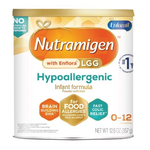- Submission based on HERTHENA-Lung01 results showing patritumab deruxtecan demonstrated clinically meaningful and durable responses in patients with advanced EGFR-mutated non-small cell lung cancer previously treated with two or more systemic therapies
- Application being evaluated under FDA Real-Time Oncology Review
- If approved, patritumab deruxtecan would be a first-in-class HER3 directed DXd antibody drug conjugate for these patients
BASKING RIDGE, N.J. & RAHWAY, N.J. — (BUSINESS WIRE) — Daiichi Sankyo (TSE: 4568) and Merck (known as MSD outside of the United States and Canada) (NYSE: MRK) announced today that the U.S. Food and Drug Administration (FDA) has accepted and granted Priority Review to the Biologics License Application (BLA) for patritumab deruxtecan (HER3-DXd) for the treatment of adult patients with locally advanced or metastatic EGFR-mutated non-small cell lung cancer (NSCLC) previously treated with two or more systemic therapies.

The Prescription Drug User Fee Act (PDUFA) date, the FDA action date for their regulatory decision, is June 26, 2024. The Priority Review follows receipt of Breakthrough Therapy Designation granted by the FDA in December 2021.
The FDA grants Priority Review to applications for medicines that, if approved, would offer significant improvements over available options by demonstrating safety or efficacy improvements, preventing serious conditions or enhancing patient compliance. The BLA is being reviewed under the Real-Time Oncology Review (RTOR) program, an initiative of the FDA which is designed to bring safe and effective cancer treatments to patients as early as possible. RTOR allows the FDA to review components of an application before submission of the complete application.
Patritumab deruxtecan is a specifically engineered potential first-in-class HER3 directed DXd antibody drug conjugate (ADC) discovered by Daiichi Sankyo and being jointly developed and commercialized by Daiichi Sankyo and Merck.
The BLA is based on the primary results from the HERTHENA-Lung01 pivotal phase 2 trial and data results presented at the IASLC 2023 World Conference on Lung Cancer (#WCLC23), which were simultaneously published in the Journal of Clinical Oncology.
In HERTHENA-Lung01, patritumab deruxtecan was studied in 225 patients with EGFR-mutated locally advanced or metastatic NSCLC following disease progression with an EGFR TKI and platinum-based chemotherapy, which demonstrated an objective response rate (ORR) of 29.8% (95% CI: 23.9-36.2), including one complete response and 66 partial responses. The median duration of response was 6.4 months (95% CI: 4.9-7.8). The safety profile of patritumab deruxtecan observed in HERTHENA-Lung01 was consistent with previous phase 1 clinical trials in NSCLC with a treatment discontinuation rate of 7.1% due to treatment-emergent adverse events (TEAEs). Grade 3 or higher TEAEs occurred in 64.9% of patients. The most common (≥5%) grade 3 or higher TEAEs were thrombocytopenia (21%), neutropenia (19%), anemia (14%), leukopenia (10%), fatigue (6%), hypokalemia (5%) and asthenia (5%). Twelve patients (5.3%) had confirmed treatment-related interstitial lung disease (ILD) as determined by an independent adjudication committee. One grade 5 ILD event was observed.
“The FDA’s prioritization of the BLA submission reflects the strength of the data from HERTHENA-Lung01 and emphasizes the need to provide new options to patients with locally advanced or metastatic EGFR-mutated non-small cell lung cancer previously treated with two or more systemic therapies,” said Ken Takeshita, MD, Global Head, R&D, Daiichi Sankyo. “If approved, patritumab deruxtecan could become the first HER3 directed medicine approved in the US and the second DXd antibody drug conjugate approved from Daiichi Sankyo’s oncology pipeline.”
“The acceptance of the BLA submission of patritumab deruxtecan marks an important step in potentially bringing this new medicine to previously treated patients with EGFR-mutated non-small cell lung cancer who often experience recurrence and have few remaining treatment options,” said Marjorie Green, MD, Senior Vice President and Head of Late-Stage Oncology, Global Clinical Development, Merck Research Laboratories. “Today is the first of many important milestones from our collaboration with Daiichi Sankyo, as we work together to bring new and potentially first-in-class antibody drug conjugates to people living with cancer.”
About HERTHENA-Lung01
HERTHENA-Lung01 is a global, multicenter, open-label, two-arm phase 2 trial evaluating the safety and efficacy of patritumab deruxtecan in patients with EGFR-mutated locally advanced or metastatic NSCLC following disease progression with an EGFR TKI and platinum-based chemotherapy. Patients were randomized 1:1 to receive 5.6 mg/kg (n=225) or an uptitration regimen (n=50). The uptitration arm was discontinued as the dose of 5.6 mg/kg of patritumab deruxtecan was selected following a risk-benefit analysis conducted from the phase 1 trial assessing the doses in a similar patient population.
The primary endpoint of HERTHENA-Lung01 was ORR as assessed by blinded independent central review (BICR). Secondary endpoints included duration of response, progression-free survival (PFS), disease control rate, and time to response – all assessed by both BICR and investigator assessment – as well as investigator-assessed ORR, overall survival, safety and tolerability.
HERTHENA-Lung01 enrolled patients in Asia, Europe, North America and Oceania. For more information about the trial, visit ClinicalTrials.gov.
About EGFR-Mutated Non-Small Cell Lung Cancer
Lung cancer is the second most common cancer and the leading cause of cancer-related deaths worldwide.1 NSCLC accounts for approximately 85% of all lung cancers – 55% having distant spread at diagnosis – with EGFR mutations occurring in 14% to 38% of all NSCLC tumors worldwide.2,3,4
About HER3
HER3 is a member of the EGFR family of receptor tyrosine kinases.5 It is estimated that about 83% of primary NSCLC tumors and 90% of advanced EGFR-mutated tumors express HER3 after prior EGFR TKI treatment.6,7 There is currently no HER3 directed therapy approved for the treatment of any cancer.
About Patritumab Deruxtecan
Patritumab deruxtecan (HER3-DXd) is an investigational HER3 directed ADC. Designed using Daiichi Sankyo’s proprietary DXd ADC technology, patritumab deruxtecan is composed of a fully human anti-HER3 IgG1 monoclonal antibody attached to a number of topoisomerase I inhibitor payloads (an exatecan derivative, DXd) via tetrapeptide-based cleavable linkers.
Patritumab deruxtecan was granted Breakthrough Therapy Designation by the U.S. Food and Drug Administration in December 2021 for the treatment of patients with EGFR-mutated locally advanced or metastatic NSCLC with disease progression on or after treatment with a third-generation TKI and platinum-based therapies.
Patritumab deruxtecan is currently being evaluated as both a monotherapy and in combination with other therapies in a global development program, which includes HERTHENA-Lung02, a phase 3 trial versus platinum-based chemotherapy in patients with EGFR-mutated locally advanced or metastatic NSCLC following disease progression on or after treatment with a third-generation EGFR TKI; a phase 1 trial in combination with osimertinib in EGFR-mutated locally advanced or metastatic NSCLC; and a phase 1 trial in previously treated patients with advanced NSCLC. A phase 1/2 trial in HER3 expressing metastatic breast cancer also has been completed.
About the Daiichi Sankyo and Merck Collaboration
Daiichi Sankyo and Merck entered into a global collaboration in October 2023 to jointly develop and commercialize patritumab deruxtecan (HER3-DXd), ifinatamab deruxtecan (I-DXd) and raludotatug deruxtecan (R-DXd), except in Japan where Daiichi Sankyo will maintain exclusive rights. Daiichi Sankyo will be solely responsible for manufacturing and supply.
About the DXd ADC Portfolio of Daiichi Sankyo
The DXd ADC portfolio of Daiichi Sankyo currently consists of six ADCs in clinical development across multiple types of cancer. ENHERTU, a HER2 directed ADC, and datopotamab deruxtecan (Dato-DXd), a TROP2 directed ADC, are being jointly developed and commercialized globally with AstraZeneca. Patritumab deruxtecan (HER3-DXd), a HER3 directed ADC, ifinatamab deruxtecan (I-DXd), a B7-H3 directed ADC, and raludotatug deruxtecan (R-DXd), a CDH6 directed ADC, are being jointly developed and commercialized globally with Merck. DS-3939, a TA-MUC1 directed ADC, is being developed by Daiichi Sankyo.
Designed using Daiichi Sankyo’s proprietary DXd ADC technology to target and deliver a cytotoxic payload inside cancer cells that express a specific cell surface antigen, each ADC consists of a monoclonal antibody attached to a number of topoisomerase I inhibitor payloads (an exatecan derivative, DXd) via tetrapeptide-based cleavable linkers.
Datopotamab deruxtecan, ifinatamab deruxtecan, patritumab deruxtecan, raludotatug deruxtecan and DS-3939 are investigational medicines that have not been approved for any indication in any country. Safety and efficacy have not been established.
About Daiichi Sankyo
Daiichi Sankyo is an innovative global healthcare company contributing to the sustainable development of society that discovers, develops and delivers new standards of care to enrich the quality of life around the world. With more than 120 years of experience, Daiichi Sankyo leverages its world-class science and technology to create new modalities and innovative medicines for people with cancer, cardiovascular and other diseases with high unmet medical needs. For more information, please visit www.daiichisankyo.com.
About Merck
At Merck, known as MSD outside of the United States and Canada, we are unified around our purpose: We use the power of leading-edge science to save and improve lives around the world. For more than 130 years, we have brought hope to humanity through the development of important medicines and vaccines. We aspire to be the premier research-intensive biopharmaceutical company in the world – and today, we are at the forefront of research to deliver innovative health solutions that advance the prevention and treatment of diseases in people and animals. We foster a diverse and inclusive global workforce and operate responsibly every day to enable a safe, sustainable and healthy future for all people and communities. For more information, visit www.merck.com and connect with us on X (formerly Twitter), Facebook, Instagram, YouTube and LinkedIn.
Forward-Looking Statement of Merck & Co., Inc., Rahway, N.J., USA
This news release of Merck & Co., Inc., Rahway, N.J., USA (the “company”) includes “forward-looking statements” within the meaning of the safe harbor provisions of the U.S. Private Securities Litigation Reform Act of 1995. These statements are based upon the current beliefs and expectations of the company’s management and are subject to significant risks and uncertainties. There can be no guarantees with respect to pipeline candidates that the candidates will receive the necessary regulatory approvals or that they will prove to be commercially successful. If underlying assumptions prove inaccurate or risks or uncertainties materialize, actual results may differ materially from those set forth in the forward-looking statements.
Risks and uncertainties include but are not limited to, general industry conditions and competition; general economic factors, including interest rate and currency exchange rate fluctuations; the impact of the global outbreak of novel coronavirus disease (COVID-19); the impact of pharmaceutical industry regulation and health care legislation in the United States and internationally; global trends toward health care cost containment; technological advances, new products and patents attained by competitors; challenges inherent in new product development, including obtaining regulatory approval; the company’s ability to accurately predict future market conditions; manufacturing difficulties or delays; financial instability of international economies and sovereign risk; dependence on the effectiveness of the company’s patents and other protections for innovative products; and the exposure to litigation, including patent litigation, and/or regulatory actions.
The company undertakes no obligation to publicly update any forward-looking statement, whether as a result of new information, future events or otherwise. Additional factors that could cause results to differ materially from those described in the forward-looking statements can be found in the company’s Annual Report on Form 10-K for the year ended December 31, 2022 and the company’s other filings with the Securities and Exchange Commission (SEC) available at the SEC’s Internet site (www.sec.gov).
References
1 World Health Organization. International Agency for Research on Cancer. Lung Fact Sheet. Accessed September 2023.
2 Economopoulou P, et al. Ann Transl Med. 2018; 6(8):138.
3 Chen R, et al. J Hematol Oncol. 2020; 13(1):58.
4 Zhang Y-L, et al. Oncotarget. 2016; 7(48):78985-78993.
5 Mishra R, et al. Onco Rev. 2018; 12(355):45-62.
6 Scharpenseel H, et al. Scientific Reports. 2019; 9:7406.
7 Yonesaka K, et al. Clin Cancer Res. 2022; 15:28(2):390-403.
Contacts
Daiichi Sankyo
Global/US Media:
Jennifer Brennan
Daiichi Sankyo, Inc.
jbrennan2@dsi.com
+1 908 900 3183 (mobile)
Japan Media:
Koji Ogiwara
Daiichi Sankyo Co., Ltd.
Ogiwara.koji.ay@daiichisankyo.co.jp
+81 3 6225 1126 (office)
Investor Relations Contact:
DaiichiSankyoIR@daiichisankyo.co.jp
Merck
Media:
Robert Josephson
+1 203 914 2372
robert.josephson@merck.com
Investors:
Peter Dannenbaum
+1 732 594 1579
peter.dannenbaum@merck.com












